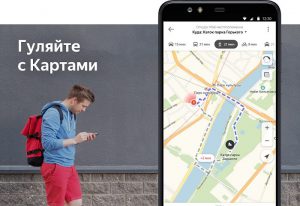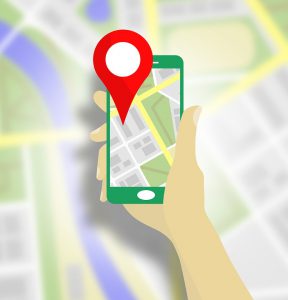 Modern smartphones are endowed with features that some users may not even be aware of. Mobile devices have replaced almost all sources of information for us, today it is difficult to imagine life without this device. To work 'everything at once' smartphones are equipped with various technologies and sensors, there are so many of them that it is difficult to understand them all.
Modern smartphones are endowed with features that some users may not even be aware of. Mobile devices have replaced almost all sources of information for us, today it is difficult to imagine life without this device. To work 'everything at once' smartphones are equipped with various technologies and sensors, there are so many of them that it is difficult to understand them all.
Such little-known parts include the GLONASS system. What is it, why is it used and is it worth overpaying for the presence of GLONASS?
Surely everyone has heard about GPS – a system for coordinating and calculating the location of a system participant. GLONASS is a direct competitor to GPS for satellites and location. GLONASS is an abbreviation for the Global Navigation Satellite System. It does the same thing as GPS – it looks for where the smartphone is, and helps to correctly navigate the terrain.
GLONASS technology
GLONASS is a Russian development, the birth of which happened back in 1982. To this day, Roskosmos continues to maintain the performance of all satellites. In total, there are 26 satellites in Earth's orbit, of which 24 are in operation. They provide stable and reliable communications with global coverage. They move above the Earth's surface in three orbital planes with an inclination of the orbital planes of 64.8 ° and an orbital altitude of 19400 km. In addition, the system broadcasts civil signals available anywhere in the world. It provides navigation services to all consumers completely free of charge and without restrictions.
to the content
GLONASS or GPS: what are the differences?
These technologies are practically twin brothers. GLONASS, unlike GPS, does not have a specific binding of all satellites to the rotation of the Earth. This allows satellites to be launched and not corrected during the entire operation. However, GLONASS satellites live much less, which is why they often have to be changed.
How are both technologies different for a particular consumer? The average person will hardly notice the difference when using any navigation system. Both one standard and the other work very quickly and provide reliable and high-quality information. Differences are noticeable only in small things.
The main advantage of one technology over another is coverage. Alas, it is still not possible to make a stable system throughout the planet. In some parts of the Earth, it will be better to catch GPS, and somewhere on the contrary – GLONASS. It is practically impossible to predict in which zone a particular system picks up a signal better, this element has a number of conventions. Such nuances include the quality of communication, the location of satellites, the weather, and so on. Therefore, it is best to use both GPS and GLONASS at the same time.
to the content
Why do I need GLONASS on my phone?
Almost all, even very budget smartphones, are equipped with GPS. However, GLONASS is not that popular among smartphone manufacturers. But GLONASS support has become popularized among mobile gadgets over time. This is done, first of all, to improve communication during navigation. As described above, the use of two technologies at once will provide the best navigation in the world.
Should you look for a smartphone with GLONASS support? The technology is useful, but only for those people whose lives are focused on navigation. First of all, these are drivers, travelers and so on. If you often use map, radar, navigation and similar functions related to location – GLONASS will improve the performance of these elements. But only in some places where GPS fails. By the way, there are few such places. In Russia, GPS blind spots are more common, but they are insignificant. If navigation is very important, then GLONASS will come in handy, but for the common user, this technology is nothing of value.
to the content
How to check for GLONASS on a smartphone?
There are two simple methods. You can just fill in the smartphone model and its characteristics on the Internet. Then GLONASS should be indicated in the navigation list, if it is not there, then there is no support. But not all sites indicate this parameter, and there are some models with cut GLONASS.
We recommend downloading the app 'GPS info (plus GLONASS BeiDou)' and trying to connect to GLONASS satellites. After opening the program, everything will happen automatically. If GLONASS is among the list of found satellites, then the technology is supported. If the satellites are only GPS, then, alas, GLONASS is not installed in this unit. If there are no satellites at all on the map, it is better to go out into the open. The complete absence of satellites signals that there is no GPS or GLONASS in the smartphone, or location determination is disabled in the settings.
to the content
How to use GLONASS on your phone?
The smartphone will automatically enable these functions without the need to configure anything. To use it, just enable the location in the settings. After that, any application that requires the use of the location will automatically catch a signal from either GPS satellites or from GLONASS, depending on the signal strength.
to the content
Google maps
The leader in the navigation market is Google Maps. This application uses all possible sources to find your location, including GLONASS. Download the Google Maps app from the Play Store.

to the content
Yandex maps
Russian prototype with navigation app. It is a complete utility for viewing maps, navigating and using the navigator online. Download the Yandex Maps application from the Play Store.

It's so easy to work with GLONASS on a smartphone. It does not depend on the application, but on the smartphone. Therefore, GLONASS will be used wherever your location data is needed.
